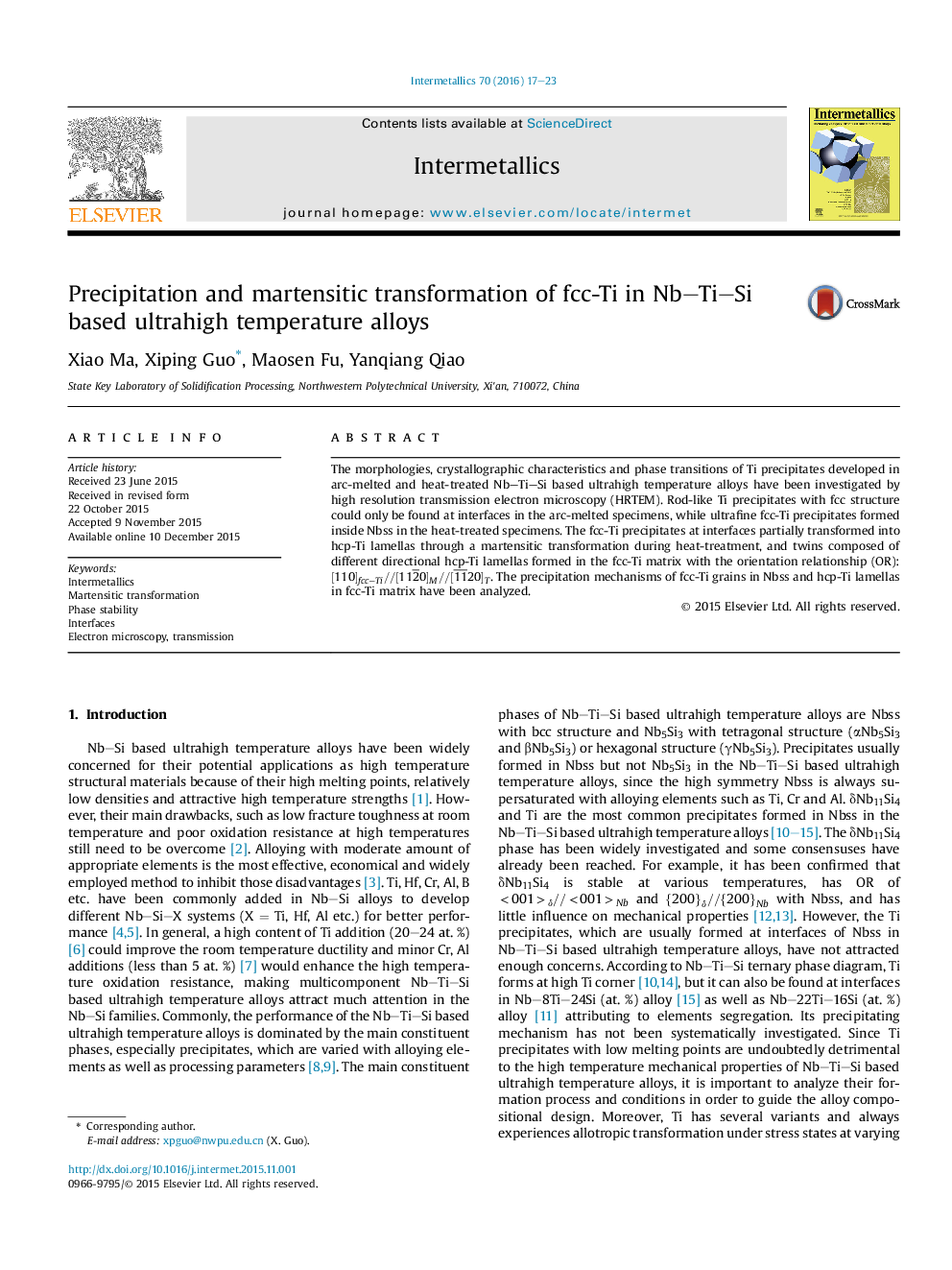| Article ID | Journal | Published Year | Pages | File Type |
|---|---|---|---|---|
| 1599674 | Intermetallics | 2016 | 7 Pages |
•Metastable fcc-Ti grains precipitate from Nbss in Nb–Ti–Si based ultrahigh temperature alloys.•Fcc-Ti precipitates partially transform into twinned hcp-Ti lamellas during homogeneous heat-treatment.•Stacking faults (SFs) play an important role in the fcc-Ti → hcp-Ti martensitic transformation.•The scale and stress state of metastable fcc-Ti might be critical to its stability.
The morphologies, crystallographic characteristics and phase transitions of Ti precipitates developed in arc-melted and heat-treated Nb–Ti–Si based ultrahigh temperature alloys have been investigated by high resolution transmission electron microscopy (HRTEM). Rod-like Ti precipitates with fcc structure could only be found at interfaces in the arc-melted specimens, while ultrafine fcc-Ti precipitates formed inside Nbss in the heat-treated specimens. The fcc-Ti precipitates at interfaces partially transformed into hcp-Ti lamellas through a martensitic transformation during heat-treatment, and twins composed of different directional hcp-Ti lamellas formed in the fcc-Ti matrix with the orientation relationship (OR): [110]fcc−Ti//[112¯0]M//[1¯1¯20]T. The precipitation mechanisms of fcc-Ti grains in Nbss and hcp-Ti lamellas in fcc-Ti matrix have been analyzed.
Graphical abstractDifferent directional hcp-Ti lamellas precipitated inside fcc-Ti matrix through a martensitic transformation during heat-treatment. The newly born hcp-Ti martensites have an orientation relationship (OR) of [110]fcc−Ti//[112¯0]hcp−Ti and coherent interface with fcc-Ti matrix. Twins have been formed between different directional lamellas with OR of [110]fcc−Ti//[112¯0]M//[1¯1¯20]T and parabolic incoherent twin boundaries (ITBs).Figure optionsDownload full-size imageDownload as PowerPoint slide
